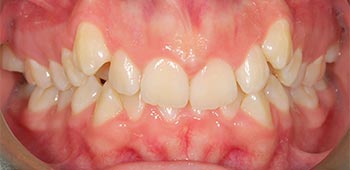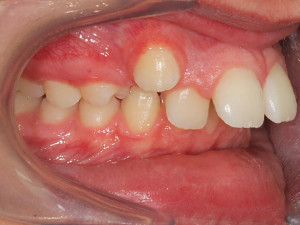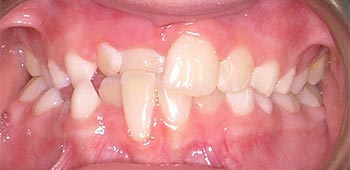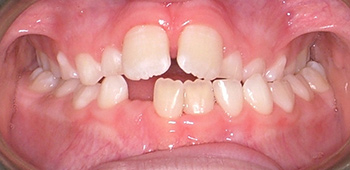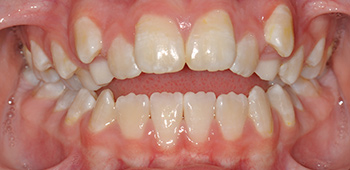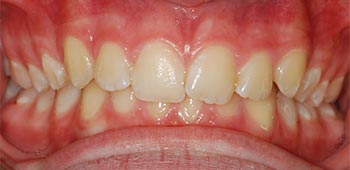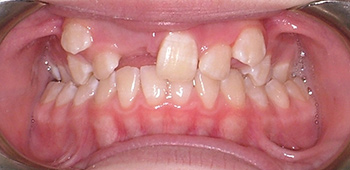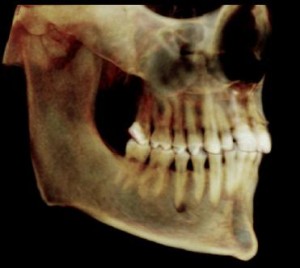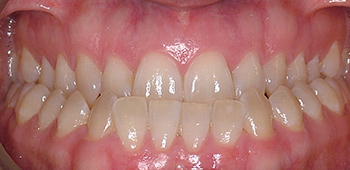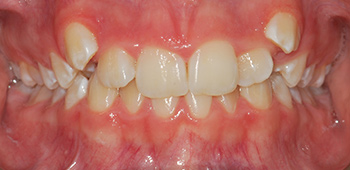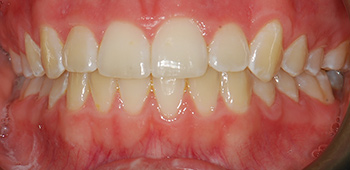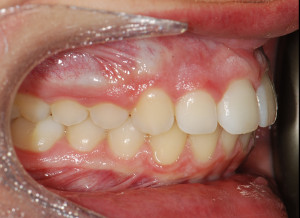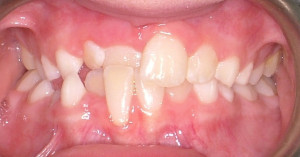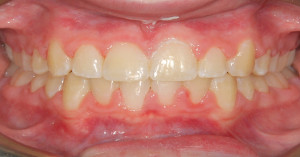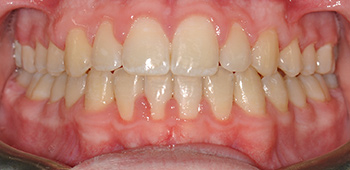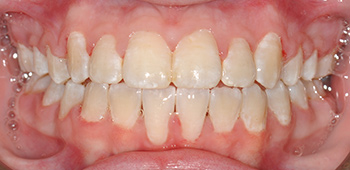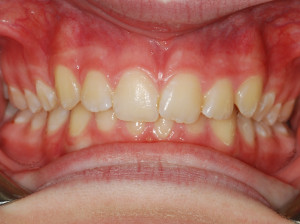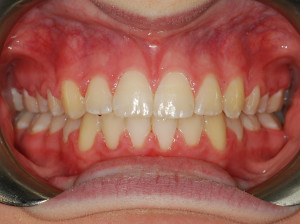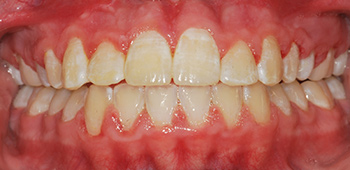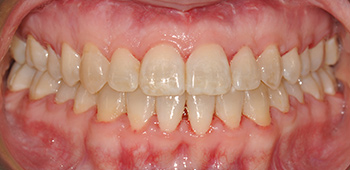Oral Hygiene & Maintenance
Common Orthodontic Problems
Frequently Asked Questions
What kind of retainer will I have?
How do I take care of my teeth and braces?
What happens if a bracket is broken off?
Is there anything I can’t eat?
Does it hurt to eat with braces?
Will braces cause ulcers in my mouth?
Will I still be able to talk when I have braces?
Do braces hurt?
Will I need to have teeth removed?
How often do I need to have my braces adjusted?
Are there any alternatives to wearing braces?
How much does orthodontic treatment cost?
How long will Orthodontic treatment take?
Oral Hygiene & Care
Although orthodontic treatment is certainly a significant financial and time commitment, perhaps the most important commitment is looking after your teeth and orthodontic appliances to ensure that the appliances are not lost or broken and teeth remain healthy. Good oral hygiene throughout orthodontic treatment is the most important priority for a successful treatment result. Under normal circumstances we should thoroughly brush our teeth morning and night, systematically and looking at a mirror, including flossing at night. During orthodontic treatment with appliances attached to the teeth, particularly braces, teeth should be brushed ideally after each meal, or more realistically, three times every day – morning, afternoon (when returned home) and before bed.
Every member of our clinical team, Dental Assistants, Orthodontists and Hygienists, can advise regarding oral hygiene, diet and care for orthodontic appliances. We monitor our patients’ oral hygiene at each appointment during active treatment by recording a score on the computer treatment record and we periodically conduct an oral hygiene competition to focus attention on how important it is.
Jaw Surgery Orthodontics
A disharmony between the position of the upper and lower jaws, or the jaws and surrounding cranio-facial structures, can be the cause of bite discrepancies, functional problems (breathing, eating, speaking) and compromise facial appearance. Disharmony of jaw position can also include the size of the jaw, particularly narrow width of the upper jaw and small or long lower jaw.
Minor disharmonies of jaw position can be compensated by using braces to adapt the alignment of teeth to the position of the jaws.
Mild jaw disharmonies can be corrected or partially corrected using orthopaedic appliances in conjunction with braces.
Moderate to severe jaw disharmonies can only be corrected by surgically repositioning the jaw or altering the jaw shape/dimension. Orthognathic (jaw) surgery procedures are arranged and meticulously planned with a specialist Oral & Maxillofacial Surgeon, in conjunction with orthodontic treatment to align the teeth on both jaws so the bite co-ordinates correctly following jaw surgery. Most jaw surgery procedures and associated orthodontic treatment are deferred until completion of skeletal growth and involve one to three days in a private hospital. The jaw surgery is scheduled at the appropriate stage during the course of orthodontic treatment which usually involves braces that are removed after surgery because they are necessary for stabilisation during the healing phase and also for post-surgery orthodontic finishing to achieve the optimum result.
Oral Surgery & Orthodontics
Occasionally minor oral surgery procedures are necessary in conjunction with orthodontic treatment. Often the more simple procedures such as removal of erupted teeth because of decay or crowding can be comfortably managed by your Dentist using local anaesthetic (injection) at the Dental Surgery. More complex surgical procedures such as removal of impacted or unerupted teeth are often arranged to be done under a short general anaesthetic (day surgery) by either your Dentist or a specialist Oral & Maxillofacial Surgeon at a private hospital. These arrangements are made according to individual patient preferences and recommendations from the Orthodontist and Dentist. Oral surgery procedures include:
Extraction of teeth: As mentioned above, erupted teeth might need to be removed because of decay, poor long term prognosis (stability), over-retention of deciduous (baby) teeth or very occasionally to correct crowding.
Extraction of impacted teeth: Wisdom teeth are the most likely teeth to become impacted which is where they remain completely or partially unerupted because of inadequate space for eruption or ectopic (abnormal) position. Surgical extraction of wisdom teeth is generally recommended due to concern regarding recurrent infection of surrounding gum, not because they cause crowding.
Extraction of ankylosed teeth: Permanent or deciduous teeth can become ankylosed which is where they are fused to surrounding bone and either remain unerupted or don’t continue to erupt to maturity alongside adjacent teeth. Ankylosis can be idiopathic (no apparent cause) or due to trauma, and ankylosed teeth cannot be orthodontically repositioned or aligned.
Ligation of impacted teeth: If we decide to orthodontically erupt impacted teeth into normal alignment, most commonly the upper canines, the unerupted impacted tooth can be surgically ligated, which usually involves attachment of a short length of fine gold chain to the tooth so that the tooth can be guided into alignment using braces.
Types of Orthodontic Appliances
Invisalign
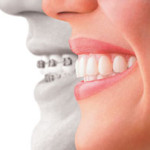 Orthodontic treatment using Invisalign is an almost invisible alternative to braces. A series of very thin, clear “mouthguard-like” aligners are used in sequence at two-weekly intervals to incrementally move teeth to the desired position. The aligners are worn full-time, day and night, except when eating and are suitable for treatment of a wide variety of orthodontic problems. Using Invisalign 3-D computer imaging technology, we can customise your treatment on-line, demonstrate specific tooth movements expected during treatment and accurately predict your treatment result.
Orthodontic treatment using Invisalign is an almost invisible alternative to braces. A series of very thin, clear “mouthguard-like” aligners are used in sequence at two-weekly intervals to incrementally move teeth to the desired position. The aligners are worn full-time, day and night, except when eating and are suitable for treatment of a wide variety of orthodontic problems. Using Invisalign 3-D computer imaging technology, we can customise your treatment on-line, demonstrate specific tooth movements expected during treatment and accurately predict your treatment result.
At Smile Design Orthodontics we have extensive experience using Invisalign since its inception and maintain active involvement in ongoing advancement of the technique through the Invisalign Future Elite program and the Invisalign Asia Pacific Forum. We can extend the application of Invisalign practice to include more complicated treatments by combining Invisalign with other orthodontic techniques such as sectional (partial) braces and temporary implant anchorage (TADs).
Metal Braces
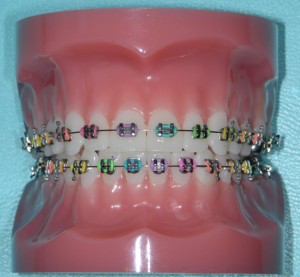 Metal braces consist of small metal brackets that are directly bonded to the teeth, in conjunction with an archwire that connects all the brackets. Brackets can be either “twin” brackets requiring coloured, silver or clear elastic modules for archwire attachment, or “self-ligating” brackets. Although brackets of either style might look the same, each bracket is individually designed for a particular tooth with specific design features, or prescription, for that tooth.
Metal braces consist of small metal brackets that are directly bonded to the teeth, in conjunction with an archwire that connects all the brackets. Brackets can be either “twin” brackets requiring coloured, silver or clear elastic modules for archwire attachment, or “self-ligating” brackets. Although brackets of either style might look the same, each bracket is individually designed for a particular tooth with specific design features, or prescription, for that tooth.
The archwires we use at Smile Design Orthodontics are made of latest technology alloys with properties that make orthodontic treatment as comfortable. The brackets we use are also latest technology and design including the option of titanium brackets for patients with metal sensitivities (usually nickel in stainless steel).
Self Ligating Braces
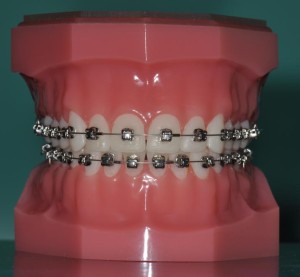 The technology of braces has been evolving, particularly over the past decade and arguably the state of the art self-ligating orthodontic appliance is the Damon System. This technique has the advantages of efficient, friction free orthodontic tooth movement, extended appointment intervals that reduce the frequency of orthodontic adjustments, and development of the dental arches compatible with facial anatomy to produce beautiful, broad smiles.
The technology of braces has been evolving, particularly over the past decade and arguably the state of the art self-ligating orthodontic appliance is the Damon System. This technique has the advantages of efficient, friction free orthodontic tooth movement, extended appointment intervals that reduce the frequency of orthodontic adjustments, and development of the dental arches compatible with facial anatomy to produce beautiful, broad smiles.
At Smile Design Orthodontics we offer the option of Damon braces, including the tooth-coloured Damon Clear braces. Not only is this technique a feature within our practice, we teach the technique to post-graduate orthodontic students in the doctoral orthodontic program at Sydney University.
Clear Braces
Clear or tooth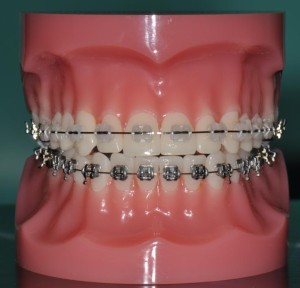 coloured braces can be used for upper teeth that are usually more obvious when talking and smiling. At Smile Design Orthodontics our patients have the option of clear braces of either Twin Bracket or Self- ligating design and also the option of clear braces on lower front teeth.
coloured braces can be used for upper teeth that are usually more obvious when talking and smiling. At Smile Design Orthodontics our patients have the option of clear braces of either Twin Bracket or Self- ligating design and also the option of clear braces on lower front teeth.
Lingual Braces
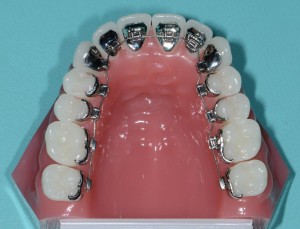 For patients who need braces to resolve their orthodontic problem but want the braces to be completely “invisible”. At Smile Design Orthodontics we can offer the option of lingual braces that are fitted to the inside or lingual surface of the teeth. We use the Harmony system lingual braces that are custom made for accurate fit and placement onto every tooth and are self-ligating style braces for efficient tooth movement to ensure optimum treatment results in minimum treatment time.
For patients who need braces to resolve their orthodontic problem but want the braces to be completely “invisible”. At Smile Design Orthodontics we can offer the option of lingual braces that are fitted to the inside or lingual surface of the teeth. We use the Harmony system lingual braces that are custom made for accurate fit and placement onto every tooth and are self-ligating style braces for efficient tooth movement to ensure optimum treatment results in minimum treatment time.
Orthopedic Appliances
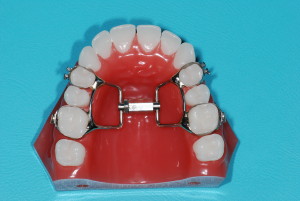 At Smile Design orthodontics we treatment plan to ensure that facial aesthetics, harmony and balance are maintained or enhanced as an important treatment priority as well as straight teeth and a beautiful smile. We carefully assess the entire face and profile in our treatment planning process and projected treatment outcome. The airway and even allergies and sleep patterns are important treatment planning considerations that can require management.
At Smile Design orthodontics we treatment plan to ensure that facial aesthetics, harmony and balance are maintained or enhanced as an important treatment priority as well as straight teeth and a beautiful smile. We carefully assess the entire face and profile in our treatment planning process and projected treatment outcome. The airway and even allergies and sleep patterns are important treatment planning considerations that can require management.
These treatment goals can in most cases be achieved by orthodontic or tooth movement. In some cases however, jaw growth or co-ordination is modified with the use of orthopedic appliances that are used in conjunction with braces. The orthopedic appliances we use at Smile Design Orthodontics are custom designed and made for comfort and normal function (smiling, speaking, chewing) during treatment.
By taking into consideration the entire face and airway, not just the mouth, we can include orthopedic appliances when indicated to correct jaw and bite discrepancies rather than adapt the position of the teeth to a pre-treatment discrepancy.
Removable Appliances
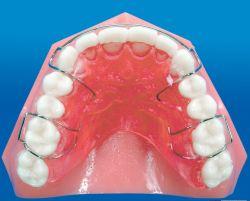 Removable appliances, sometimes referred to as “plates”, usually consist of a plastic or acrylic framework supporting a variety of wires that can be active to move teeth or passive to hold the appliance in place. The acrylic “plate” can also support auxiliaries such as expansion screws to widen the dental arch or springs to move specific teeth. Removable appliances can’t substitute for braces but can be used for simple tooth movements, sometimes as a preliminary measure prior to more comprehensive treatment when all permanent teeth have erupted. Plates can also serve as retainers which are worn at night on completion of comprehensive orthodontic treatment to maintain the treatment result.
Removable appliances, sometimes referred to as “plates”, usually consist of a plastic or acrylic framework supporting a variety of wires that can be active to move teeth or passive to hold the appliance in place. The acrylic “plate” can also support auxiliaries such as expansion screws to widen the dental arch or springs to move specific teeth. Removable appliances can’t substitute for braces but can be used for simple tooth movements, sometimes as a preliminary measure prior to more comprehensive treatment when all permanent teeth have erupted. Plates can also serve as retainers which are worn at night on completion of comprehensive orthodontic treatment to maintain the treatment result.
Space Maintainers
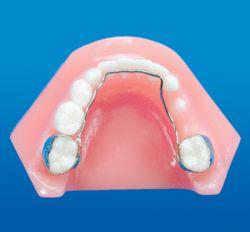 Space Maintainers are used to preserve or maintain space in the dental arch for later eruption of permanent teeth. The most common indication for a space maintainer is following premature loss of a deciduous (baby) tooth usually due to decay or partial impaction of a permanent molar. Space maintainers are passive appliances, fixed to one or two stable teeth and generally removed when the intended permanent tooth or teeth erupt into the arch.
Space Maintainers are used to preserve or maintain space in the dental arch for later eruption of permanent teeth. The most common indication for a space maintainer is following premature loss of a deciduous (baby) tooth usually due to decay or partial impaction of a permanent molar. Space maintainers are passive appliances, fixed to one or two stable teeth and generally removed when the intended permanent tooth or teeth erupt into the arch.
General Dentistry & Orthodontics
At Smile Design Orthodontics our practice is limited to orthodontic treatment which is provided by our orthodontists who are registered specialist orthodontists. Throughout your orthodontic treatment we maintain a close professional relationship with your general Dentist who will continue to provide your routine dental treatment such as fillings, preventive treatments or specific dental procedures that your Dentist considers necessary. It is important that correction of dento-facial problems is comprehensively achieved for you through a team, or “multi-disciplinary” collaboration between your general Dentist, Orthodontist and sometimes other dental specialists.
We recommend that you see your Dentist for regular check-ups every six months throughout your orthodontic treatment and sometimes every three months if there are oral hygiene problems that require more frequent management. We specifically encourage you to maintain your dental check-ups with your Dentist through our Dental Care Partnership Program which is put in place when you commence orthodontic treatment.


